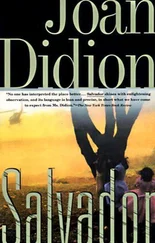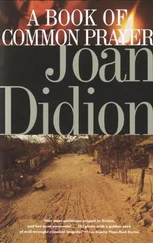1 ...6 7 8 10 11 12 ...38 Just by adding water.
This vale of sterility would bloom as the nation’s garden.
A fairly simple procedure for those brief periods when man and nature are in harmony.
The San Luis Dam, at the time it was completed in 1968, cost three billion dollars. What this taxpayerfinanced investment meant to the San Joaquin’s Westlands Water District was that several hundred growers, most of them corporate, would have the assurance of water, ditches, big automated Rain Birds moving all day with the sun. These growers would also have the assurance of “irrigation subsidies,” which by 1987, according to Gerald Haslam’s The Great Central Valley , amounted to twenty-seven million dollars, eleven million of which went to the Southern Pacific Land Company. “You can’t buck the railroad” was a common phrase in my childhood, but I never ventured into its local application.
HOLLISTER, the San Benito County town near which Frank Norris spent the summer of 1899 researching The Octopus , was named for, and built on land at that time only recently owned by, an emigrant from Ohio named William Welles Hollister. In 1852, William Welles Hollister had driven some three hundred head of cattle from Ohio to California, sold them, and returned home. In 1853, he again made the crossing, this time driving not cattle but sheep, five thousand head. This time he stayed, and over the next twenty years he and two partners, Albert and Thomas Dibblee, accumulated some two hundred thousand acres of ranch land ranging from Monterey and San Benito Counties south to Santa Barbara. William Welles Hollister was the sole owner of thirty-nine thousand acres in Santa Barbara County alone, the several ranches collectively referred to as “the Hollister ranch,” which at the time of its sale in the late 1960s incorporated the twenty miles of coastline running south from Point Conception and constituted one of the last intact coastal properties of its size between the Oregon and Mexican borders.
Such extensive holdings, typically acquired on very little equity, were not, at the time of their acquisition, entirely unusual, nor did William Welles Hollister and the Dibblee brothers even count among the largest private owners. In 1882, Richard O’Neill and James Flood together bought more than two hundred thousand acres straddling the line between Orange and San Diego Counties, a holding undivided until 1940, when the Flood heirs took the San Diego acreage and the O’Neill heirs took the Orange. Further north in Orange County, the heirs of James Irvine held the ninety-three thousand acres he had acquired in the 1870s by combining acreage originally granted to the Sepulveda and Yorba families, a property that stretched from the mountains to the sea and covered one-fifth of the county. By the time James Ben Ali Haggin and Lloyd Tevis consolidated their properties in 1890 as the Kern County Land Company, they had acquired, throughout the Southwest, almost a million and a half acres, roughly a third of them in the San Joaquin Valley. Henry Miller, another big holder, who once said that he could drive his cattle from Oregon to the Mexican border and sleep them every night on his own land, had arrived in San Francisco in 1850 with six dollars in his pocket and gone to work as a butcher. Within twenty years, he and his partner, Charles Lux, also a butcher in San Francisco, had gained control of ten to twelve million acres in California, a million and a half owned outright and grazing rights on the rest, vast tracts largely acquired through imaginative interpretation of the small print in federal legislation.
Miller, for example, made deals with cash-hungry veterans, buying up, at a discount, the land options to which they were entitled as a service benefit. He also made deft use of the federal Reclamation Act of 1850, which had granted California’s “swamp and overflowed” land to the state, which in turn sold it (the “virtual gift” noted by Charles Nordhoff in 1874) for $1.15 to $1.25 an acre, an amount returned to any buyer who could demonstrate use of the land. Henry Miller was instrumental in getting large parts of California classified as swamp, in one favored telling by hooking up a team of horses to tow a rowboat over the land in question. Nor, at the time, was this even an obscure angle: Power and Land in California , the 1971 report prepared by the Ralph Nader Task Force and later published as Politics of Land , noted that two of the state surveyors responsible for classifying land as “swamp and overflowed” each left office with three hundred thousand acres.
Such landowners tended to have not much interest in presenting themselves as the proprietors of farms or estates on the eastern, which was to say the English, model. William Henry Brewer, when he came out from Pennsylvania in 1860 to assist Josiah Dwight Whitney in the first geological survey of California, complained that the owner of eighty thousand acres between Gaviota Pass and San Luis Obispo lived “about half as well as a man would at home who owned a hundred-acre farm paid for.” Almost a century later, Carey McWilliams, in California: The Great Exception , remarked on the almost total absence of conventional “rural” life in California, which would have been, were it a country, the world’s seventh-largest agricultural producer: “The large shipper-growers ‘farm by phone’ from headquarters in San Francisco or Los Angeles. Many of them travel, nowadays, exclusively by plane in visiting their various ‘operations.’ … Their relationship to the land is as casual as that of the migratory workers they employ.” To live as farmers would have been, for the acquisitors of these operations, a bewilderingly alien concept, since their holdings were about something else altogether: they were temporary chips in the greater game of capital formation.
This is well known, yet remains an elusive point for many Californians, particularly those with a psychic investment in one or another heightened version of the founding period. The heroine of Jack London’s The Valley of the Moon , Saxon Brown, when hard times and union troubles come to Oakland, finds herself “dreaming of the arcadian days of her people, when they had not lived in cities nor been vexed with labor unions and employers’ associations. She would remember the old people’s tales of self-sufficingness, when they shot or raised their own meat, grew their own vegetables, were their own blacksmiths and carpenters, made their own shoes — yes, and spun the cloth of the clothes they wore.… A farmer’s life must be fine, she thought. Why was it that people had to live in cities? Why had times changed?” In fact almost no one in California speaks of “farmers,” in the sense the word is used in the rest of the country, and yet this persistent suggestion of constructive husbandry continues to cloud the retrospect. What amounted to the subsidized monopolization of California tends to be reinvented either as “settlement” (the settlers came, the desert bloomed) or, even more ideally, as a kind of foresighted commitment on the part of the acquisitors, a dedication to living at one with both the elemental wilderness and an improved patrician past.
“We had all shared in the glamour of immense, privately owned land,” one of William Welles Hollister’s seven grandchildren, Jane Hollister Wheelwright, wrote in The Ranch Papers: A California Memoir , the book she published in 1988, some twenty years after the sale of the Hollister ranch. “We lived in a fantastic but real world of our own discovery: square miles of impassable terrain, wild cattle threatening on the trail, single coyotes caterwauling like a pack, pumas screaming, storms felling giant oaks, washouts that marooned us for days, wildfires that lasted weeks and scorched whole mountain ranges.” Her father, she tells us, “rarely wore his chapaderos,” and did not use his silver-inlaid saddle, “but our Mexican ranch hands knew him for what he was. They called him ‘El Patrón.’ ” In 1961, after the death of the father, the daughter returns alone to the ranch, the point at which there appears in her memoir the first shadow on the glamour: “No one was there to meet me — not even the ranch hands,” she writes. “I had none of the honor and recognition given automatically to El Patrón. The ranch seemed deserted. I was being deliberately avoided. Wandering aimlessly, I found myself walking into the canyon that stretched in back of the old family home.… The disappointment at seeing no one quickly faded. At least the land was there to greet me.”
Читать дальше
Конец ознакомительного отрывка
Купить книгу












